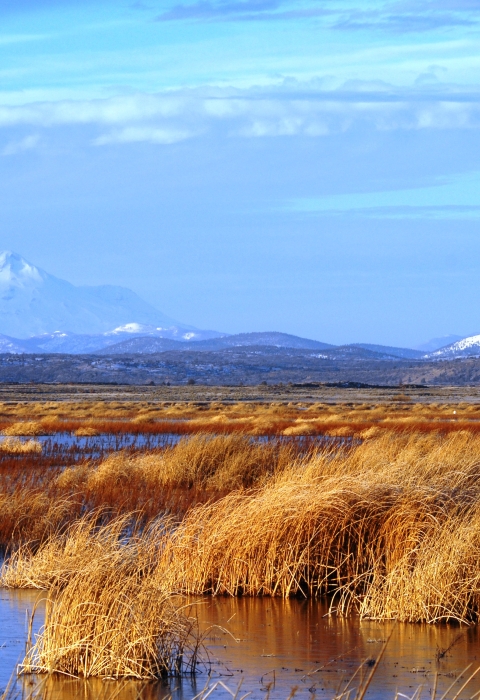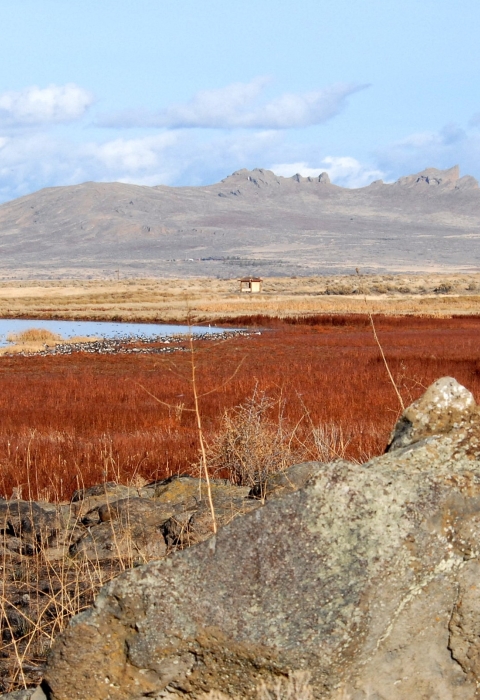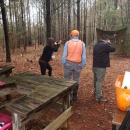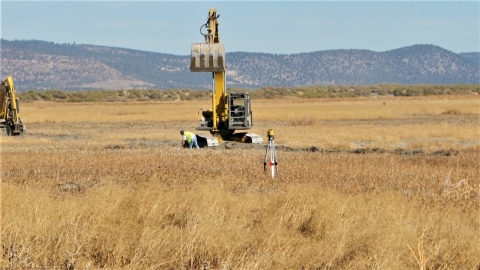Visit Us
The Basics
Where is this place? Klamath Basin National Wildlife Refuge Complex is located in northern California near the Oregon border. The Refuge Complex Visitor Center and headquarters, is located at 4009 Hill Road, Tulelake, CA 96134 and can be reached by calling (530) 667-2231
How do I get there? From California: Head north on Interstate 5 to Weed, CA, then northeast 45 miles on Highway 97 to the Oregon Border. Take Stateline Road (Hwy. 161) east towards Tulelake, CA to Hill Road. Turn south on Hill Road. The visitor center is located 4 miles south on Hill Rd. From Oregon: Headquarters is located 20 miles south of Klamath Falls, Oregon via Hwy. 97 south to Stateline Rd (Hwy 161) east towards Tulelake, CA to Hill Road. Turn south on Hill Road. The visitor center is located 4 miles south on Hill Rd. Or from Hwy. 39 south from Klamath Falls to Merril Pit Rd, follow the signs from there to the visitor center located on Hill Rd. Please contact the refuge visitor center for more information at (530) 667-2231
Can I bring my dog? Dogs are permitted. Pets must be on a 6 ft. leash at all times. Please clean up after your dog.
What is the Fee? There is no fee to visit. However, an annual recreation pass is required if you are planning to hunt on any part of the Tule Lake or Lower Klamath National Wildlife Refuges.
When Can I Visit? The refuge is open 7 days a week from sunrise to sunset.
Where Should I Go? These Maps & Brochures will help you get oriented and provide basic information about the refuge. For more detailed information, check out the Visitor Activities section of our website.
Points of Interest
Klamath Basin National Wildlife Refuge Visitor Center At Tule Lake
We encourage you to start your visit at the Klamath Basin National Wildlife Refuge Visitor Center. There are a variety of exhibits, displays, brochures and wildlife-oriented programs. Refuge staff and volunteers are available to answer questions and help plan activities.
Videos are shown by request daily in the visitor center, and programs on a variety of topics are offered during the summer. Inquire at the information desk for further details.
The Klamath Basin National Wildlife Refuge Visitor and Administrative Center is open 7 days a week. The hours are:
9:00 A.M. - 4:00 P.M. Monday through Sunday
*Closed December 24th, 25th, 31st and January 1st.
Trails
A variety of trails are open to hikers, paddlers, and vehicles. These trails include the Sheepy Ridge, Discovery Marsh, the Wildlife Observation points, Canoe trail and, Auto Tour Route.
Location and Contact Information
About Us
For the wildlife enthusiast, a visit to the Klamath Basin Refuges at any season is a voyage of never-ending discovery. Year to year and season to season the dynamic ebb and flow of wildlife is a process of constant change. When you visit greatly determines what you will see. You are encouraged to stop by the Refuge Visitor Center when you first arrive. Exhibits colorfully describe refuge wildlife and information regarding viewing opportunities, recent sightings, road conditions, and regulations is available.
Projects and Research
Walking Wetlands
In a response to altered landscapes, habitat shifts, and water deficits, refuge management has found brilliant ways to restore wetlands on former agricultural fields
that have substantial benefits to agriculture as well.
Since the mid-90s, the U.S. Fish & Wildlife Service and co-operators have begun converting farm fields to wetlands and then back again. This rotation of farm to
wetland/and back mimics the creation and destruction of wetlands that used to occur along the edges of a naturally fluctuating Tule Lake. Fields are typically flooded soon after harvest and by fall they become habitat for migrating waterfowl. After 2 years, following the wetland cycling, fields are returned to agricultural production. Known as “walking wetlands,” this practice has dramatically increased wildlife use and enhanced crop production while eliminating the need for pesticides.
This practice has also been adopted on nearby private farmland.



